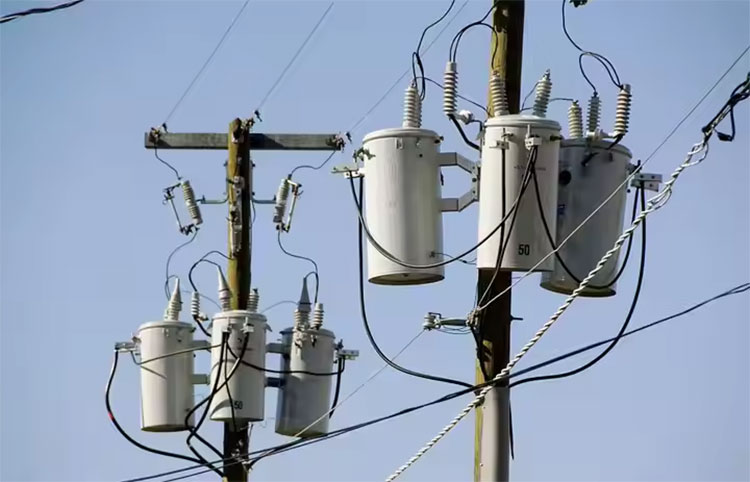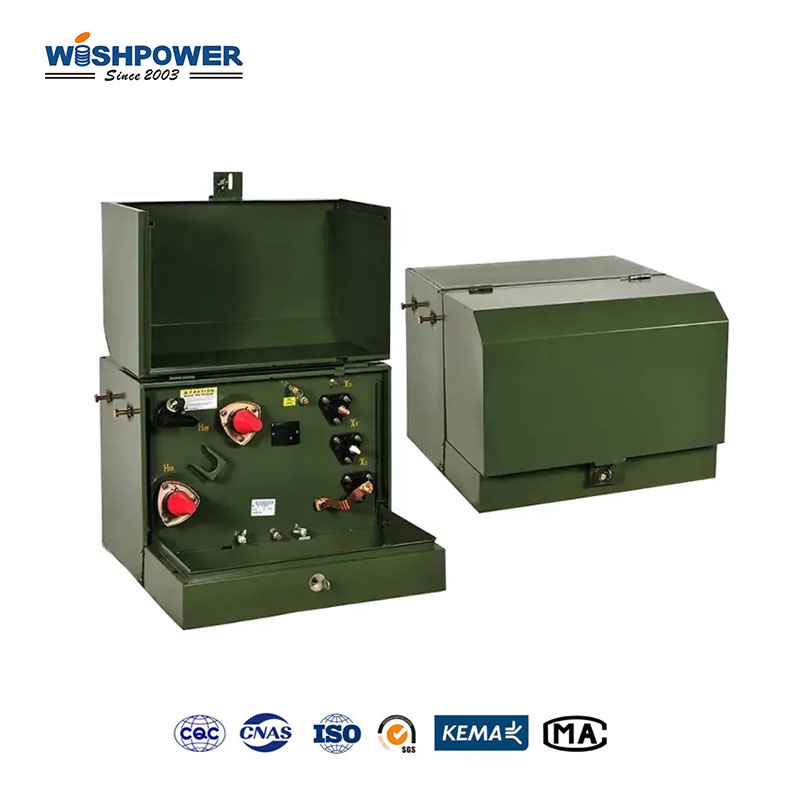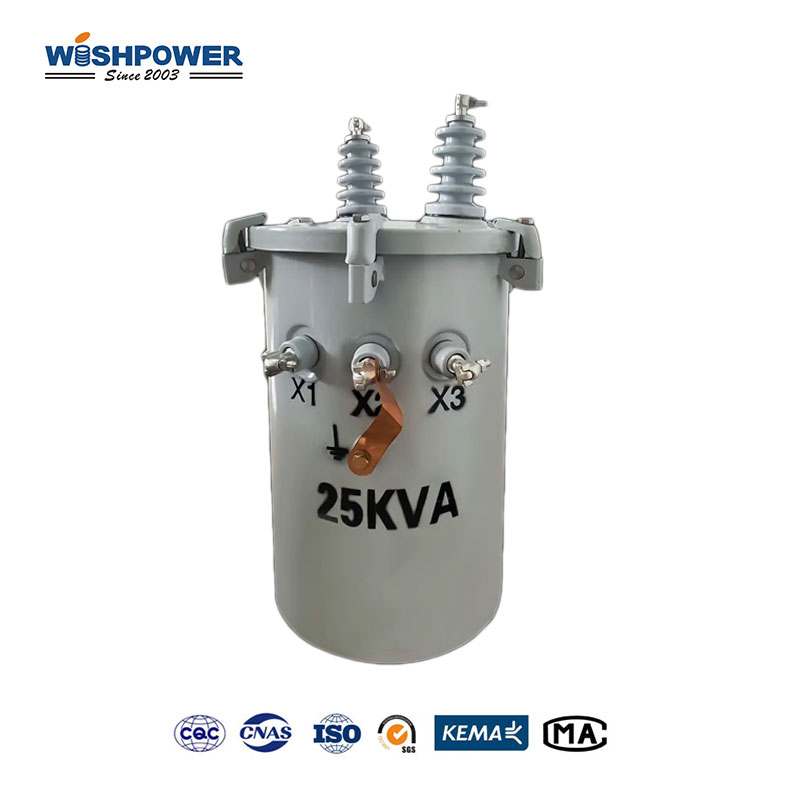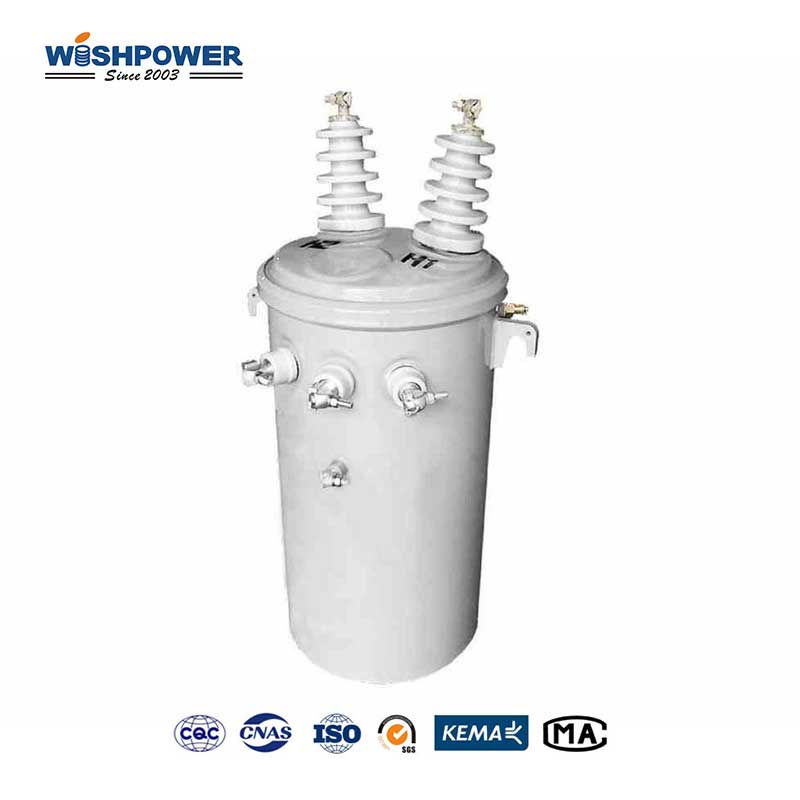How to select the right capacity for a single-phase pole-mounted transformer?
The right single phase pole mounted transformer capacity must be selected in order to achieve efficient and reliable power distribution. Transformers are a major part of the power system, reducing voltage to suit residential, commercial, or light industrial user needs.

Understand Load Requirements
The most important first step in selecting an exact transformer is to know what load outfit you expect to serve. Kilovolt amperes are used to measure the requirements and the requirement is based on the sum power consumption of all the connected devices or equipment. To accurately calculate the load:
Identify all electrical loads: Write down all appliances, machinery, or equipment that is going to be powered by the transformer.
Determine power consumption: If necessary convert the wattage or amperes rating of each device to kVA.
Consider future expansion: Always add a safety margin usually 10 to 20% of current load.
Voltage Considerations
The distribution lines step down from high voltage to the lower voltage needed by the end user by using single-phase pole-mounted transformers. Check that the transformer has the same primary and secondary voltage tested with the utility input and the load required output.
Primary voltage: In general, check the distribution line voltage which is about 7.2 kV to 35 kV.
Secondary Voltage: Typically residential and small commercial, these applications are 120/240V.
You match the right voltage so that’s compatible and it doesn’t damage equipment or make it inefficient.
Evaluating Load Types
Not all electrical loads are the same, and understanding their characteristics can influence transformer selection:
Resistive Loads: The loads in these include heaters, incandescent lamps, and ovens, which draw the same and a constant current.
Inductive Loads: Inrush currents are much higher when they first turn on breathers, motors, refrigerators, and air conditioners, which their transformer must be able to handle.
Harmonic Loads: Harmonic distortion of devices like computers, and LED lighting can create harmonics that interfere with a transformer’s efficiency. We recommend one with as little harmonic distortion as possible.
Environmental Factors
The location and environmental conditions where the transformer is installed can influence its performance and capacity requirements:
Ambient Temperature: A reduced capacity as well as reduced efficiency can cause higher temperatures.
Altitude: At high altitudes, less air density forces the need to size transformers differently.
Weather Exposure: Ensure the transformer has a secure housing that conditions are conditioned to rain, wind, and environmental conditions.
Efficiency and Energy Losses
Operating costs depend largely on the efficiency of a transformer. Reductions in energy losses make efficient transformers a cheaper alternative every day. Key considerations include:
Core losses: The transformer’s magnetic core is where these occur and they are fixed, independent of load.
Copper losses: They are in the windings and increase with increased load. In using transformers, size the transformer to minimize these losses during typical operation.
Consequently, these losses can be greatly reduced if the transformer is chosen with advanced materials and design.
Safety and Regulatory Compliance
Transformers must comply with safety standards and regulations to ensure reliable and hazard-free operation:
Overload protection: Keep the transformer fuses or circuit breakers in appropriate connectors to avoid damage in overloading.
Grounding: Electrical faults are protected by proper grounding that keeps personnel safe as well.
Certifications: Concerning local and international standards, such as ANSI, IEEE, etc.
Matching the Transformer Size to the Application
The appropriate transformer size varies depending on the intended application:
Residential: A single-family home usually requires a 10-25 kVA transformer.
Small Commercial: For small store or office loads, this may need a transformer within the range of 25 to 50 kVA.
Light Industrial: We may require capacities up to 100 kVA for a workshop or small plant.
Choose your selected transformer to not put the proper rating when it comes to peak load demands.
Cost VS Performance
While cost is a fact, prioritizing performance and reliability ensures long-term value:
Initial Cost: The upfront cost might be higher for larger capacity, or more efficient, transformers.
Operating Cost: Long-term power cost reduction can be achieved with energy-efficient transformers.
Downtime Cost: Failure and expensive outages are avoided by choosing the right capacity.
Consult an Expert
Transformers can be selected in complex systems or with uncertain requirements by consulting a professional. This allows an expert to assess your specific needs, suggest what capacity is the best for you, and comply with all relevant standards. With these factors in mind, you can choose the right capacity for your single-phase pole mount transformer, based on your need for efficient, reliable, and safe distribution of power.
If you have different opinions or want to know more, please leave a message on the website or contact us directly at info@wishpower.net

















